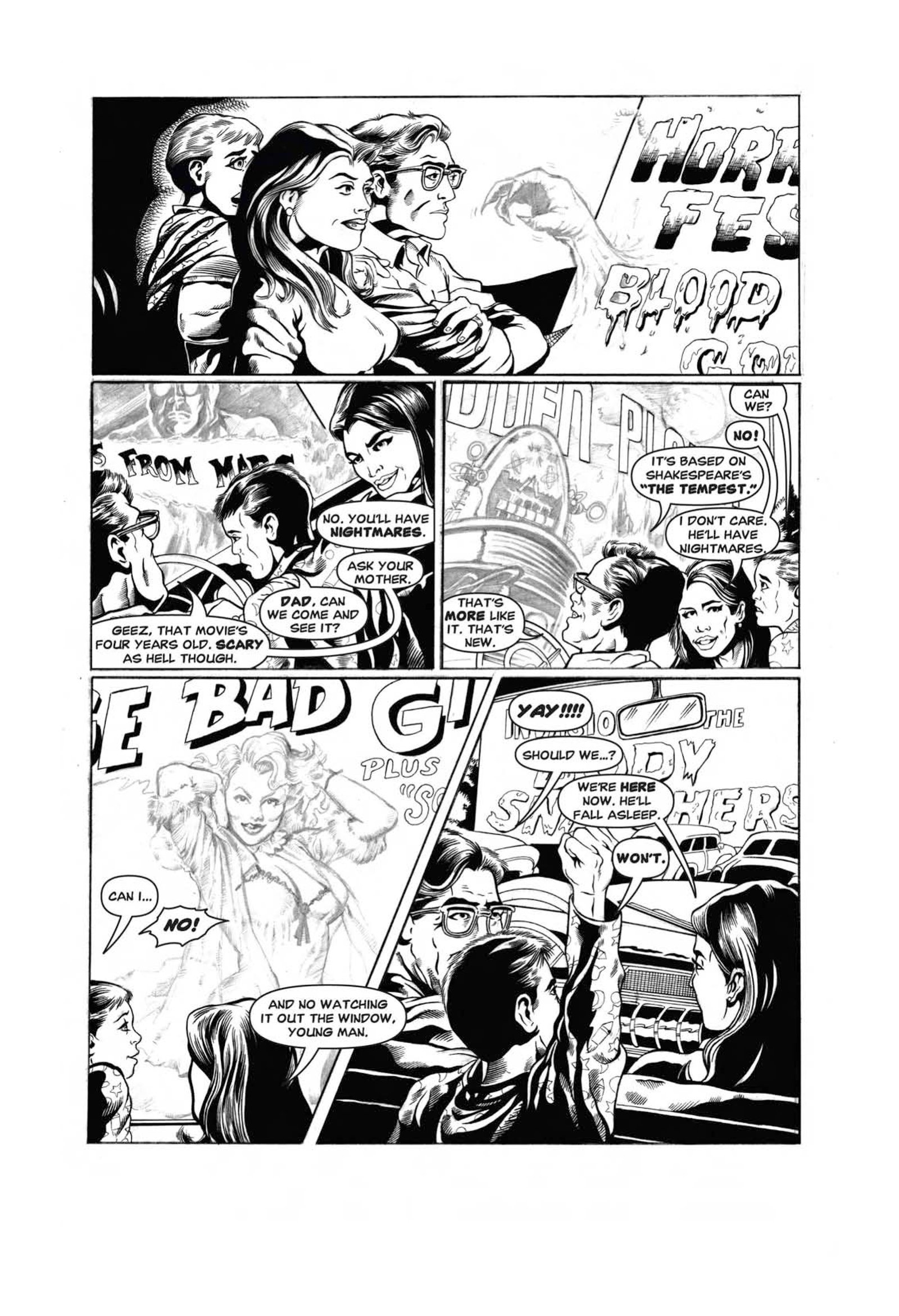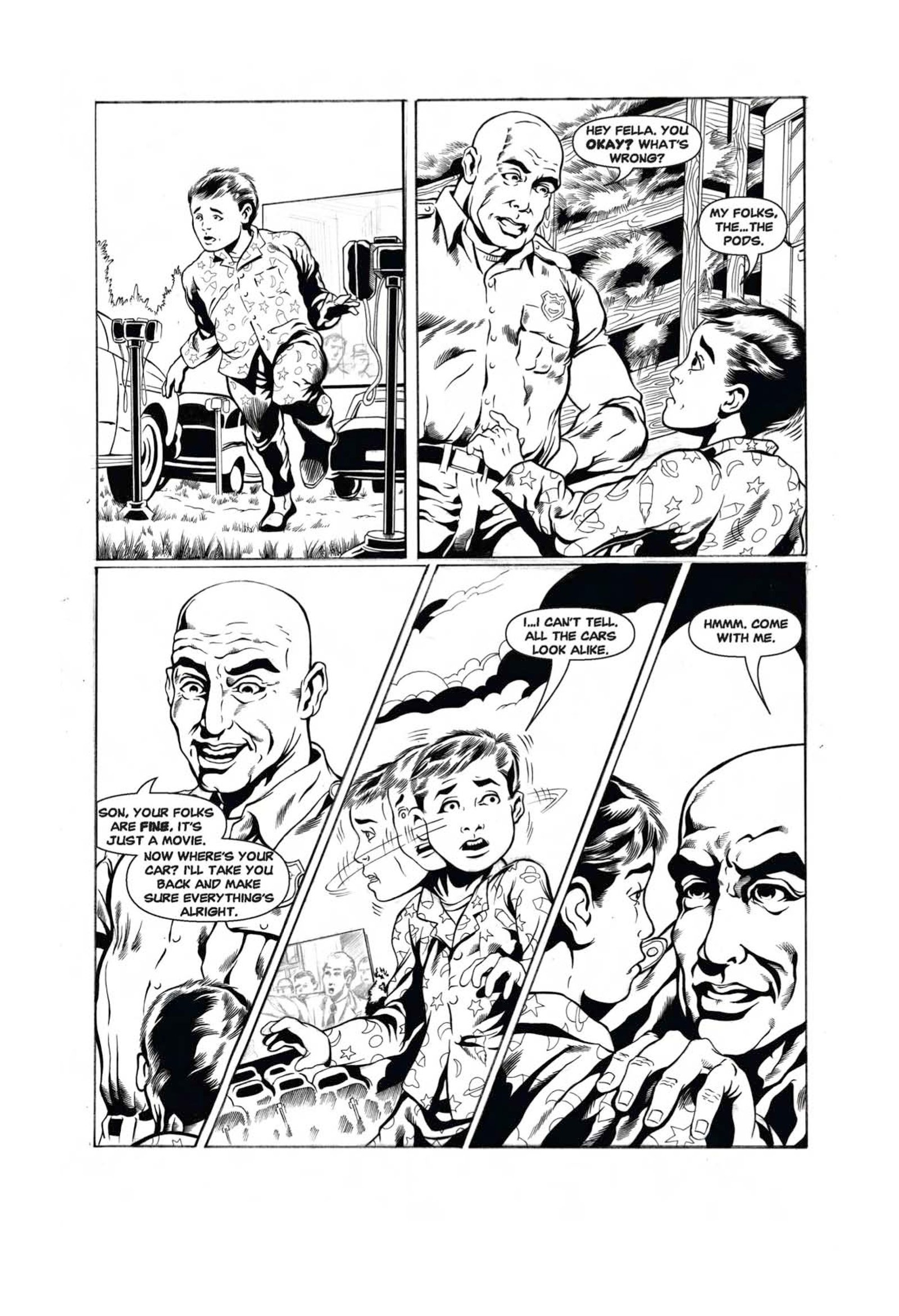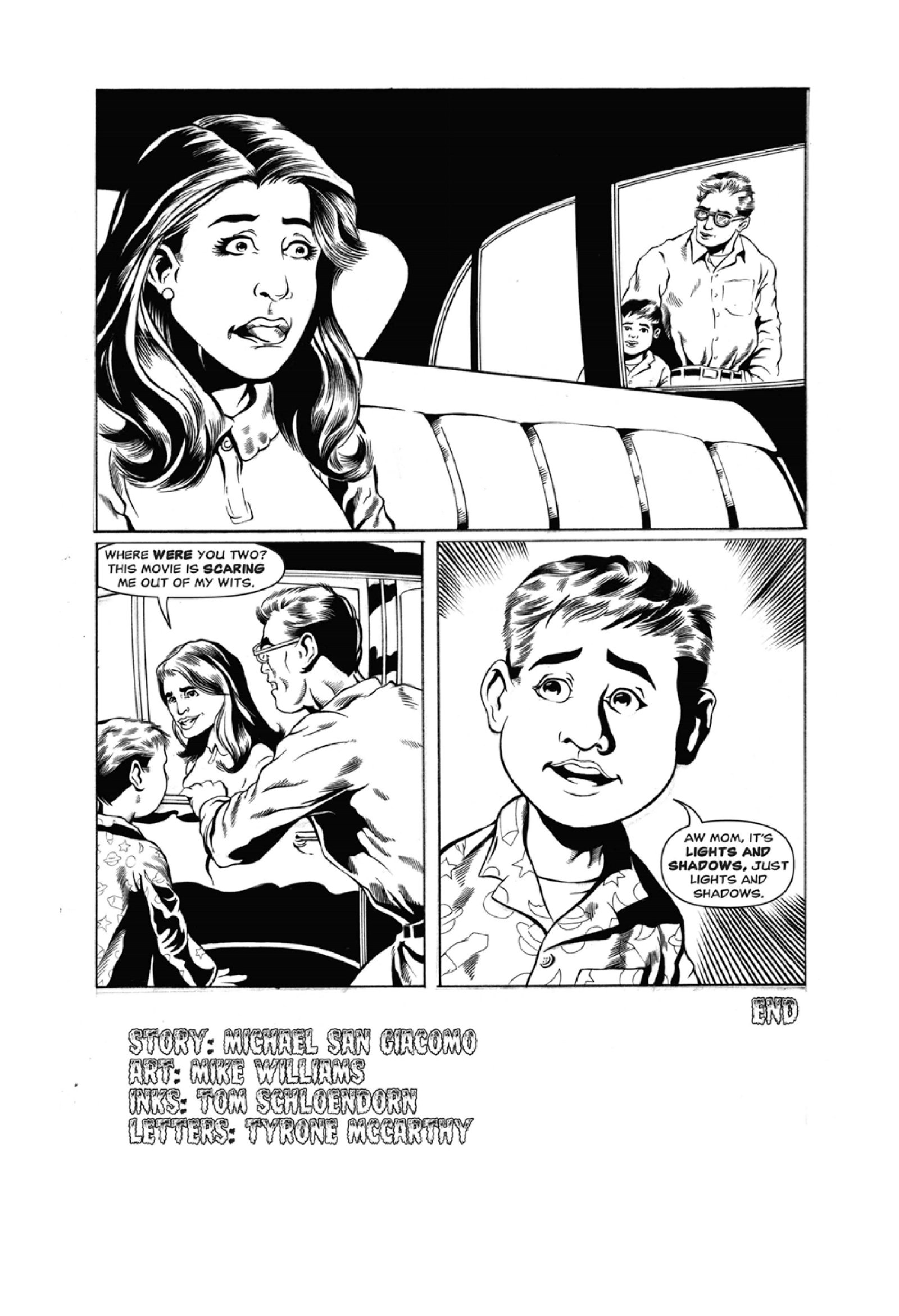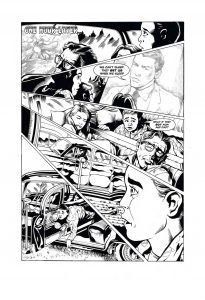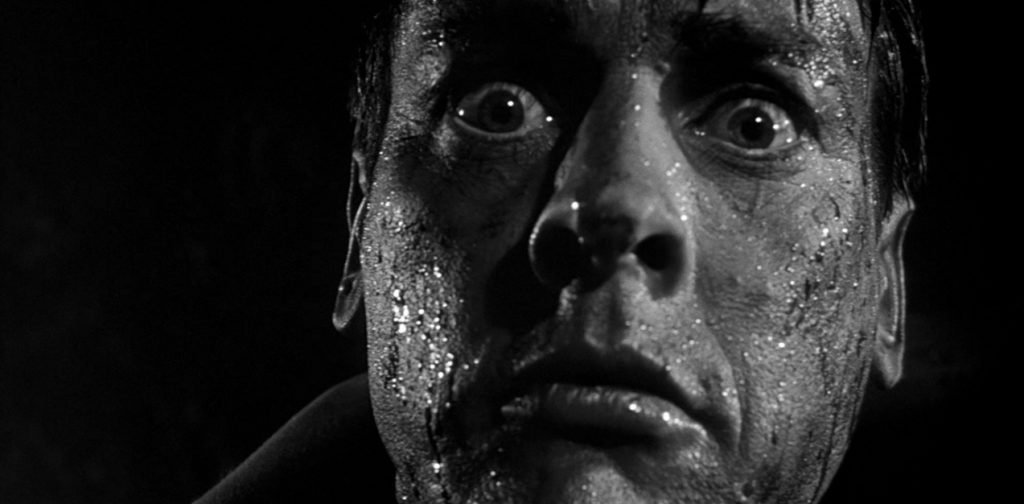
It is 1956, the height of the Cold War, only a few years after the alleged UFO incident at Roswell. Don Siegel’s movie adaptation of an obscure serialized novel about an alien invasion shows a raving doctor running down a dark highway shouting “They’re already here! YOU’RE NEXT” . The warning stabs into the paranoia of the age. But what does it really mean? What did the writer, Jack Finney, want it to mean? I contacted Jack Seabrook, one of the few specialists on Finney in order to find out more.
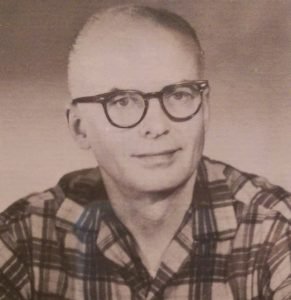
Historyradio.org: Was Jack Finney making some sort of personal statement in The Invasion of the Body Snatchers, either politically or psychologically?
Jack Seabrook: I can answer this two ways: by telling you what Finney said and by telling you what I think. Finney’s novel was called The Body Snatchers—they added “Invasion of” for the movie, surely because there was a boom in science fiction movies at that time. In Danse Macabre, Stephen King quoted Finney as saying: “I have read explanations of the ‘meaning’ of this story, which amuse me, because there is no meaning at all; it was just a story meant to entertain, and with no more meaning than that . . .” Having studied all of Finney’s writing, from his earliest short stories in the 1940s to his last novel in the 1990s, I think that The Body Snatchers fits neatly into a theme that he explored over and over, and that is the belief that something has gone wrong in small-town America and the present is not as good as the past. The fact that readers on both sides of the political spectrum have seen aspects of the novel that support their points of view suggests to me that it is simply a well-written book, one that allows readers to see in it what they want to see.
Historyradio.org: When and how did he come up with the idea for the novel?
Jack Seabrook: I don’t know how he came up with the idea for the novel, but it was most likely written in 1954, since it was serialized in three issues of Collier’s magazine in November and December 1954. The novel, which has some important differences from the serial, was published in 1955.
Historyradio.org: I know he was born in Wisconsin, and then moved to California. What sort of life did he live on the west coast? Did he become part of any literary movement?
Jack Seabrook: Finney was a very private man who rarely gave interviews and who shunned publicity. He moved to Mill Valley, California, in the late 1940s and lived there for the rest of his life with his second wife, Marguerite. They had a daughter around 1951 and a son, who was born around the time The Body Snatchers was serialized.
Historyradio.org: He had some sort of background in advertisement. Did that influence his writing or his career in any way?
Jack Seabrook: Finney worked as a copywriter for advertising agencies in the 1930s and 1940s, first in Chicago and then in New York City. As of 1946, he was 35 years old, working in New York City, and had been an ad copywriter for 12 years, so it was probably his first job out of college. His time in the advertising business was a major influence on his writing. Many of his stories and novels satirize the world of advertising; for example, Good Neighbor Sam (1963) is the story of a man who works for an ad agency and is caught up in a hilarious mix-up involving his wife and the beautiful woman who lives next door. One of his most famous and suspenseful short stories, “Contents of the Dead Man’s Pocket” (1956), tells of a young man whose obsession with his work nearly costs him his life.
Historyradio.org: Did he experience any financial success in the aftermath of the first film version?
Jack Seabrook: Finney had been financially successful as a writer by the time the film came out, but the film certainly made him more famous and wealthy. The rights to the serial, on which the film was based, were sold for $7500, so I don’t think that was much of a windfall for Finney, but the film made him more well-known than he was before it opened in theaters. In a 2000 article on Finney, J. Sydney Jones wrote that Invasion of the Body Snatchers “changed everything for the forty-three-year-old writer and . . . allowed him to support his family solely on his writing.”
Historyradio.org: Do we know anything about the relationship between Finney and Don Siegel? When did they meet?
Jack Seabrook: In early January 1955, producer Walter Wanger, screenwriter Daniel Mainwaring, and director Don Siegel went to visit Jack Finney at his home in Mill Valley, California, to talk about the story and to scout filming locations. However, Finney was not involved in writing the screenplay.
Historyradio.org: There are differences between Finney’s novel and Siegel’s movie. Finney actually communicates hope at the end of his work, while the movie ends in a nightmare. Are there other differences?
Jack Seabrook: There are differences between the two, yet the film is faithful to the novel. The famous framing sequence is not in the book. A major character, Jack Belicec, is taken over by aliens in the film but this does not happen in the novel. Most important is the transformation of Becky into a pod-person near the end of the film; this is also absent from the book. As you note, the book ends happily while the film concludes with a much more ominous message, though it does leave open the possibility of salvation.
Historyradio.org: There isn’t much information about Finney online. What sort of man was he? He seems to have lived an uneventful life. Tell us something interesting about him?
Jack Seabrook: Finney was born in Milwaukee, Wisconsin, in 1911 and named John Finney. He was nicknamed Jack as a baby and the nickname stuck. His father died when Jack was just two years old and the boy was renamed Walter Braden Finney, in memory of his father, but always went by Jack. In the 1920s, as a child, he visited Galesburg, Illinois, in the summers, and many years later he wrote a famous story called “I Love Galesburg in the Springtime” (1960). He also attended Knox College in Galesburg. In the late 1940s, he and his first wife were divorced in Reno, Nevada, and he met his second wife while he was there. He later wrote stories set in that town, such as “Stopover in Reno” (1952). He died in 1995, less than a year after the publication of his last novel, From Time to Time, a sequel to his classic novel, Time and Again (1970).
Historyradio.org: The Invasion of The Body Snatchers was by some condescendingly regarded as a mere «serialized novel». However, numerous masterpieces have emerged from the pens of «pulp writers». Why do you think that is?
Jack Seabrook: Finney never wrote for the pulp magazines, which paid much less than the so-called “slick” magazines, where most of his short stories were published. Both the pulps and the slicks were home for writers of popular fiction, such as Finney, and I think that the middle part of the twentieth century in America saw an explosion of talent among American writers. There were so many markets, so many places to sell one’s fiction, that it was not surprising to see some excellent work come out of non-literary publications. The more literary writers of the time, at least in America, were increasingly writing fiction that did not appeal to the common reader, so a gulf between popular and serious fiction began to grow. Still, many writers whom we today consider literary, such as William Faulkner or John Steinbeck, were looked down upon for years as writers of popular fiction. I think that sometimes a period of time is necessary to be able to see what is really quality fiction.
Historyradio.org: A lot of famous stories have been serialized. Oliver Twist and Conan the Barbarian come to mind. The Body Snatchers was originally a serial in Collier’s Magazine. What was Finney relationship with that magazine? Did he write for other magazines?
Jack Seabrook: Collier’s was one of the slick magazines that published many of Jack Finney’s short stories. Collier’s was founded in 1888 and, by World War Two, it had a weekly circulation of 2,500,000! Imagine that! One of Finney’s first short stories was published in Collier’s in 1947 and he had twenty-nine stories published in that magazine between 1947 and 1956, when it ceased publication. He also had stories published in other magazines, including Ladies’ Home Journal, Good Housekeeping, Cosmopolitan, The Saturday Evening Post, and Playboy. From 1947 to 1965, he was a prolific short story writer; after 1965, his fiction was confined to novels.
Historyradio.org: When the pod people take over, they copy everything about the original person, except for their feelings. The world slowly becomes populated by emotionless clones? Why is this so frightening, do you think?
Jack Seabrook: Your adjective “emotionless” sums up the problem. Without love for each other, what is the point of living? When people have no emotion, when they don’t care about themselves or others, they began to lose interest in everything around them. I think this was Finney’s point in the novel—the decline in small town living in America in the post-World War Two period seemed, to him, to be a symptom of a greater problem in society. People did not take care of themselves or their homes and towns began to get run down. This led to more crime, juvenile delinquency, etc. I think that a life without emotion, without feelings, is no life at all.
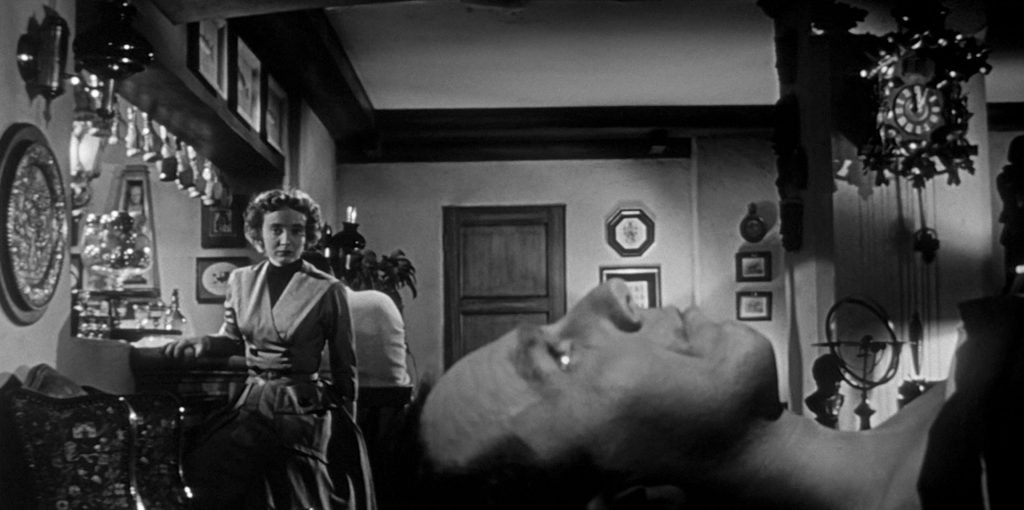
 |
Jack Seabrook is the author of Stealing Through Time: On the Writings of Jack Finney (2006), published by McFarland & Co. He is an independent scholar residing in New Jersey. |
|---|
Read a tribute to The Invasion of the Body Snatchers below, courtesy of author Mike San Giacomo, artist Mike Williams, inker Tom Scholendorn and Tyrone McCarthy.
Watching The Body Snatchers at the drive-in
The full graphic novel is called Tales of the Starlight Drive-In (Image Comics), and includes many other stories. You can buy it here



